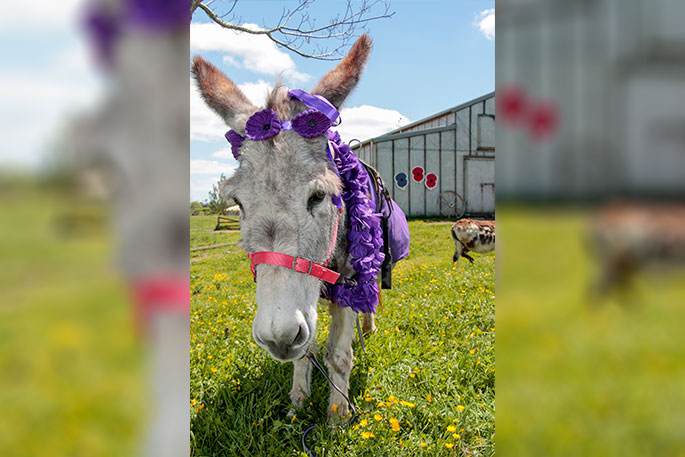Every Armistice Day and ANZAC Day, Olive Love remembers all of the animals that lost their lives during the World War One. She hangs giant poppies on her barn at her Windermere donkey farm, and knits large purple poppies for her donkeys to wear.
'There were horses, mules, donkeys, dogs, camels, pigeons and elephants who died in war,” says Olive. 'The losses were in the millions.
'At the start of the Second World War, the British government put out a panic statement regarding the welfare of pets. As a result, 750,000 pets were euthanised in one week in Britain. That's three quarters of a million.
'They were euthanised because the government said you can't keep them, you can't feed them. I was gobsmacked.”
Richard Henderson, from Waihi, transported injured soldiers at Gallipoli on his donkey Murphy, and a photograph of them was used for the famous Moore-Jones painting of Simpson and his donkey.
Purple poppies commemorate the animals that were injured and lost their lives in conflict.
According to England's Animals in War Memorial Fund, eight million horses died in WWI. They were used to transport ammunition and supplies to the front line.
Dogs were relied upon for duties including detecting mines and digging out bomb victims, while 100,000 pigeons were used to carry messages in WWI, and 200,000 in WWII.
Commando, a pigeon used by the British Armed Forces, carried out more than 90 missions and received the Dickin Medal, which is the animal equivalent of the Victoria Cross.
Purple poppies are a reminder that animals used in warfare were, and continue to be, victims of war - they did not give their lives, their lives were taken from them. The purple poppy remembers the animals that didn't return from WWI.

